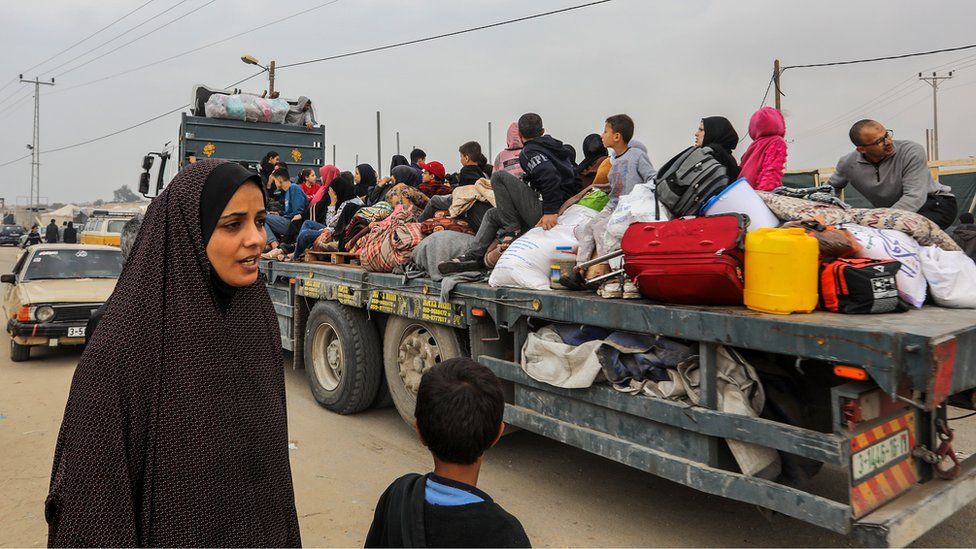-

-
-
Loading

Loading

Aid agencies are expressing concern over the lack of safe places for Palestinian civilians to flee to, following Israeli military orders for evacuation in the city of Khan Younis. The Israeli military initially instructed tens of thousands of residents to move to overcrowded areas in the south and west. However, on Tuesday, the military announced that it was too dangerous for people to leave as their forces had already entered the city. Leaflets were distributed, warning people to stay inside designated shelters and hospitals. This evacuation strategy was implemented to reduce civilian casualties within the ongoing conflict between Israel and Hamas. Nevertheless, there are worries that the plan is too complicated and dependent on technology, causing panic and making it unworkable. Additionally, many affected individuals did not have access to the maps or were unaware of the evacuation instructions due to limited internet access and power supply. Even if they were able to flee, there is no guarantee of safety from bombardment. Furthermore, the main Palestinian telecommunications firm reported that all phone and internet services were once again cut off. Prior to the ceasefire collapsing, the Israeli ground operation had been focused on the northern region of Gaza. They requested all residents, consisting of 1.1 million people, to relocate south of Wadi Gaza for their safety. Consequently, hundreds of thousands followed the order, leading them to Khan Younis. The IDF also suggested that civilians move to al-Mawasi, a strip of land along the Mediterranean coast declared a "humanitarian zone." During a visit to Israel, US Secretary of State Antony Blinken urged Israeli leaders to implement plans for civilian protection. These plans included designating safe areas free from hostile fire. In response, the IDF released an "Evacuation Zone Map" divided into numbered blocks, distributing leaflets with QR codes for access to the map. The US state department acknowledged improvements in this approach. However, the IDF's order for civilians to move from Khan Younis to Rafah received criticism from the head of Unrwa, the UN agency for Palestinian refugees. Philippe Lazzarini condemned the order, stating that it caused panic and forced an additional 60,000 people into already overcrowded shelters. He emphasized that no place in Gaza is safe. On the other hand, Unicef spokesman James Elder dismissed the concept of a safe zone as a dangerous false narrative. He highlighted that these areas lack essential resources and conditions for survival. Israel's senior adviser, Mark Regev, rejected these criticisms, claiming that there are designated safer zones and that any structures targeted were linked to Hamas. The health ministry in Gaza, controlled by Hamas, reported that 70% of the nearly 15,900 casualties since the start of the conflict were women and children. The military campaign was launched by Israel in response to a cross-border attack by Hamas gunmen in October, resulting in numerous casualties and hostages.